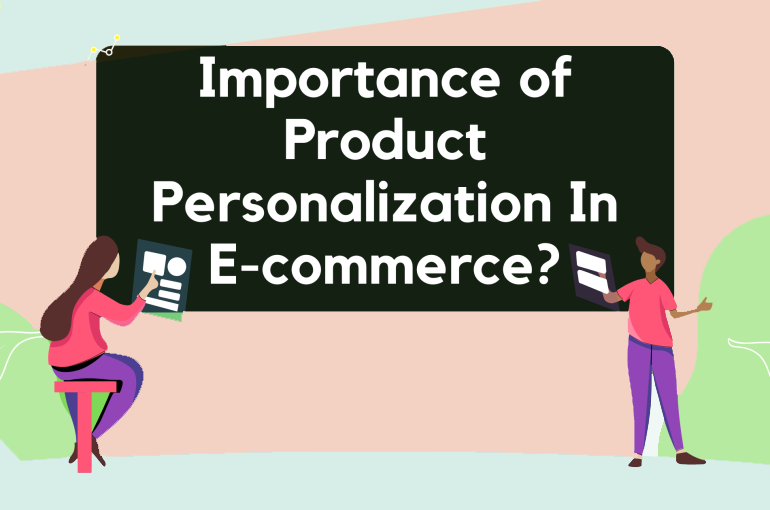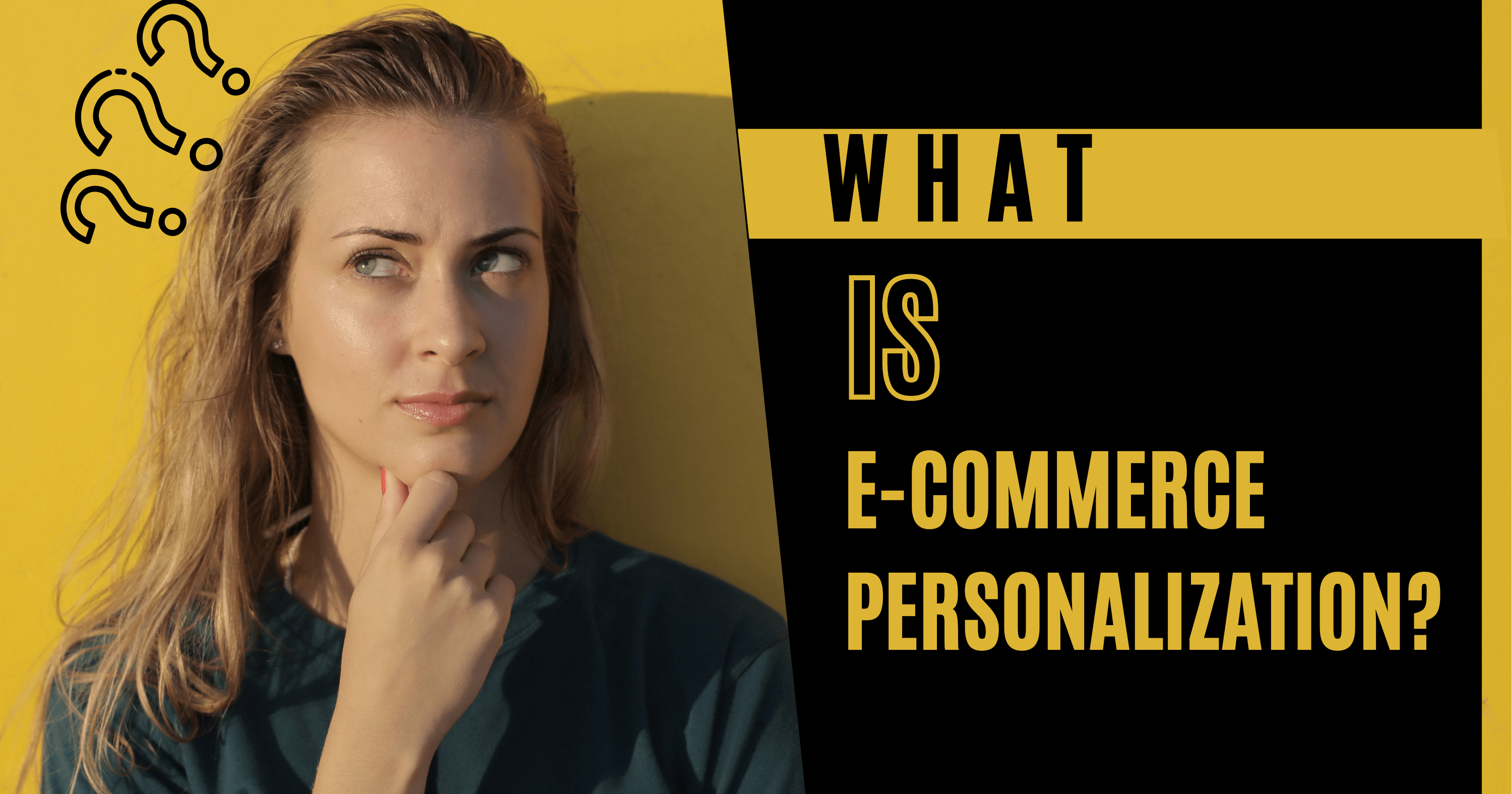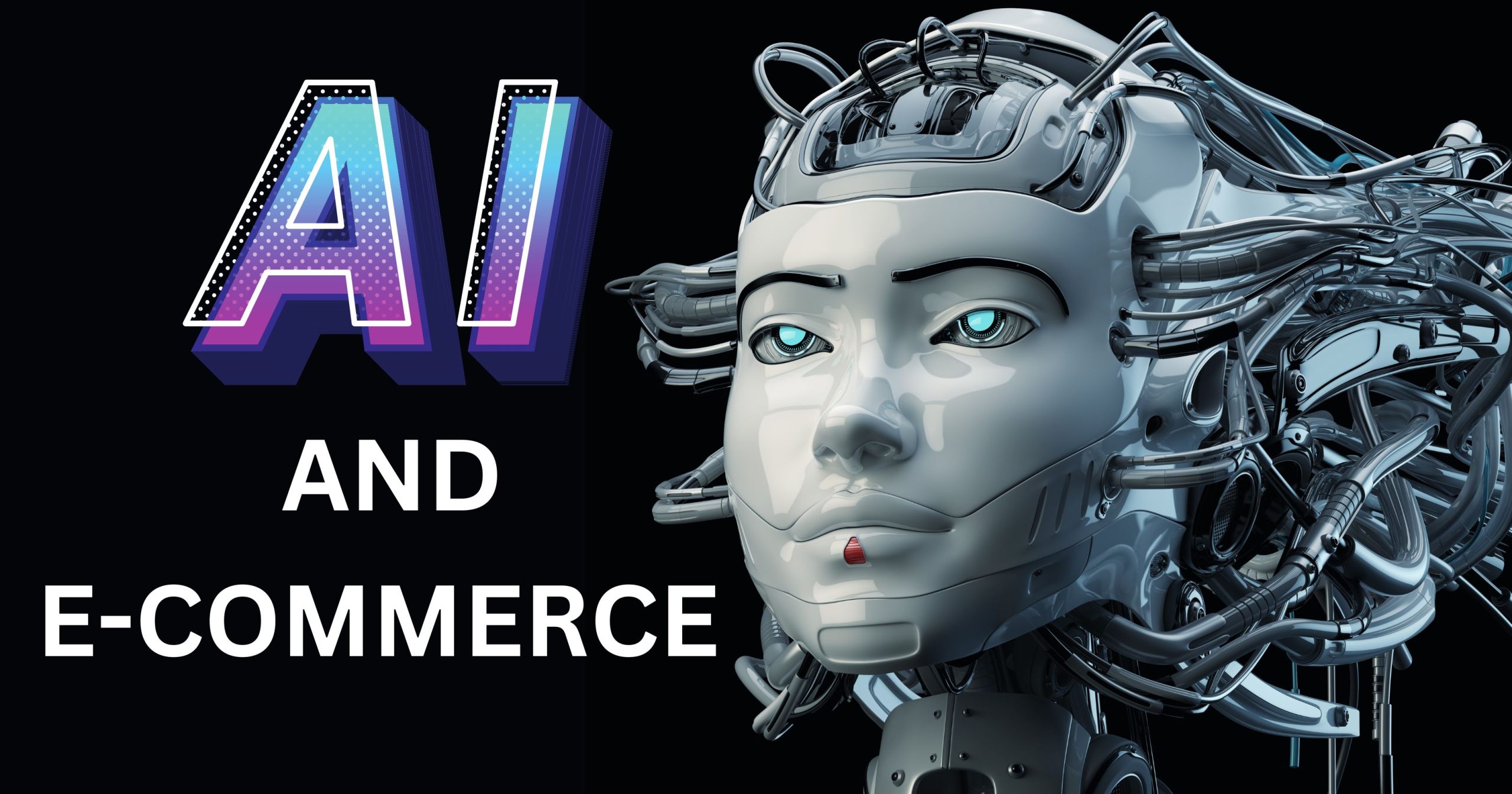The Importance of Product Personalization in E-commerce
The Importance of Product Personalization in E-commerce

E-commerce has been a part of our life for a very long time. People always prefer luxury over most things in life, and E-commerce gives us the luxury of running our business-related activities online.
The E-commerce community is always looking for ways to get personalized systems to get a balance between company goals and customer satisfaction. However, we are closer to this technology than we thought. There are so many variations, each with its characteristics, that sometimes users need clarification when choosing the right one for their online business.
But that’s why we are here, to help you choose the right kind of personalization for your online startup.
Let’s Dive into this deep adventure

What is E-Commerce Personalization?
Using the commerce data of an organization effectively to know your customer, impress them and show them enough experience to solidify their trust in the organization’s services is the basic concept of E-commerce personalization. Personalization includes personalized messages, content, layouts, products, and more for anonymous and known customers, powered by real-time data.
Personalization is critical to making customers aware of any product and making them come visit and make purchases based on their needs and preferences.
How is E-Commerce Personalization Beneficial for you?
As mentioned before, E-commerce brought the world the luxury of online shopping. Back then, a guy would get into a store and buy stuff, which was time and energy-consuming at the same time. But E-commerce allowed us to do the same thing from the palm of our hand.
There is a tiny “but” though. A gentle worker often assists customers when browsing in a store or shop. However, on the online platform, that is mostly never the case. That’s where personalization comes in. Personalization allows us to collect data on our customers, and based on those data, we get to provide them with the exact kind of assistance and experience they need.
The number of online e-commerce businesses is practically countless in this day and age. So the competition is quite high in the e-commerce market. Personalization not only brings advantages but gives the customers experiences unique to the theme of an organization.
The better the personalization, the greater advantage you will have over your competitor in the e-commerce market. You to consider everything before creating an E-commerce app or website.
Why Personalization Matters?
A simple one-line answer to this would be – It brings maximum value to your E-commerce business. But there is always more to consider –
Customer demand for unique experiences:
Anything unique stands out a lot. As discussed before, personalization adds these experiences based on the company’s theme. Each company has its own unique goals, visions, designs, management, and, lastly, customer services. Personalization allows customers to experience this uniqueness while enjoying the services a brand offers.
Increased Customer Loyalty and Engagement:
Customer engagement is everything, and personalization is the best thing that can help do just that. Customers buying repeatedly are often given loyalty points which they can later use to redeem certain things of their liking. Quite the way of engagement between the brand and the customer.
But they mostly get redemption options they don’t need. With personalization, it becomes clear from what product line a customer comes. As a result, rewarding them with products of the same product line always satisfies a consumer and drives engagement.
Better Customer Insights and Data:

Personalizing your E-commerce technology brings out the best way to provide what the customer exactly needs, minus the hassle of browsing.
Since it’s an online system, personalized products will also have different prices depending on the customer’s IP address, location, and currency. If you need help with what you need, personalization also offers recommendations.
Improved Customer Experience and Satisfaction:
Merging two of the benefits in one – based on collected data, providing the customers with what they need and giving them their product line-based experiences, bares a result where the customer is happy and forward to becoming a regular consumer in an organization. Personalization eases the customer management system of E-commerce businesses just like that.
Boost in Sales and Revenue:
After all the necessary adjustments and creating awareness regarding the uniqueness of your personalization comes the part of sales and revenue. By the sub-title, it’s clear that personalization boosts these two. The process is straightforward. You are giving your customer a unique service that others need to get. You know what your customer needs and how they need it.
The rest works like a charm. Personalization is like a one-switch command that single-handedly boosts every single process of an E-commerce business.
E-Commerce Personalization – Designing and the Strategy

The design and the strategy for the perfect personalization were mentioned before in the article. Appearance and tactics always play a massive part in the success of E-Commerce businesses. Now let’s take deep dive into these things –
Understanding Customer Preferences:
New or old, a customer entering your site will leave a public track record of browsing. You can clearly understand their visiting cycle, buying cycle, and the product line they belong to. By solely monitoring these, you can present the customers with what they need. Most online social platforms provide this kind of convenience nowadays.
This monitoring strategy gives the Business owner a perfect insight into a customer and their preferences. And afterward? Put the pieces where they belong, and sell the customer’s desired product!
Data-Driven Approaches for E-Commerce:
Nowadays, data is almost as valuable as some gems in the market. A few years back, people made a lot of guesses to determine a concrete strategy for their startups. But now, data is the core power that runs a business. E-commerce businesses can gather data by monitoring customers and their browsing cycles.
Based on these gathered data, marketers determine the whole picture of their personalization. You no longer have to go through the guessing game and be in the uncertainty of failure. With data at your disposal, you get to make your decisions based on facts.
Designing UI to UX:

User Interface and User Experience play crucial roles in the personalization of E-commerce. It is wise to bring these two into the success equation of e-commerce regardless of the platform your website is standing on. But let us know the ins and outs first –
The Differences Between UI and UX:
User Interface (UI) is the collection of a button or app-like visual components that allows the user to interact with a product directly. On the other hand, User Experience signifies a user’s experience with various products and their management. Both of these are connected.
UI is all about design and appearance, whereas UX is about the journey of the user, which surprisingly includes creating a buyer persona.
Buyer Persona:
When artists aim to draw something, they imagine a sight in their minds first. Similarly, Buyer Persona is simply the fictional representation of customers/consumers. Users often create one in their minds to be ready to deal with all the various consumers they have to deal with.
A buyer persona can help with –
- Getting better suggestions,
- Targeting potential Customers
- The creation of better UI.
- The creation of better Customer-driven stories
And much more, depending on your market.
UX design trends:
People use various designs to get their desired UX. Here are some quick beginner guides you can dive in –
UI Design in E-commerce:
Now, as mentioned before, UI Design is all about appearance and how pretty your Interface looks to the consumers. When a consumer visits your e-commerce app or website for browsing, they will stay longer than usual if they find the app visually pleasing for their eyes. That earns the user more monitoring time on the consumer.
The features matter as well. A button here, a component there, placed for the ease of use for the consumer, always hails better results. If your consumers get irritated while using your UI, it’s safe to say they won’t be coming back again. So these things need to be looked upon. UI is there to smoothen the process of browsing for consumers.
Therefore, to keep your consumers happy and attract new ones, pour some time into the colors, pictures, and fonts you wish to use in your UI.
The Right Platform for E-Commerce Personalization:
There is no exact market platform for E-Commerce personalization. There is the B2B market and then the B2C market. Both of these can be considered the top-grossing markets where E-commerce thrives in. Let’s explore these two a bit –
B2B – Personalization:
B2B means Business to Business in short. If we were to explain it in a line, B2B signifies the business dealings between two Businesses where the buyer’s business side is considered the consumer. Usually, these kinds of trades are long-term, assuming the seller side has earned the trust of the buyer side. Now as the seller side, how do you do that? B2B Personalization!
Following a similar route of consumer monitoring, the seller has to live up to the expectations of the buyer side. This doesn’t include any points or redeemable goods. What is attractive to the buyer side are the discounts. The buyer side in a B2B always looks to buy a bundle of things and expects the seller side to give some discounts since they are buying so many things at once.
This is the core technique the seller side can use to attract the buyer side, and how does the seller side get to do that kind of thing? Monitoring the browsing pattern of the buyer.
B2C Personalization:
This one will only need a little explanation, as we have discussed the whole process of B2C personalization multiple times. Set up the best environment for your consumer, monitor their browsing pattern, provide them with the exact thing they need, and then based on their regular browsing history, reward them with the product with the same kind of product line they are used to.
This sounds simple but nonetheless is a bit complicated when practiced in actuality. But the result it bares is satisfying.
Where Does an AI Stand in All of These?

With the arrival of CHATGPT, Artificial Intelligence is one of the hot topics right now. How about letting an AI do all the work instead of a user? What is the end result?
You would be surprised to know that AI is familiar with the E-commerce personalization subject. It has been one of the major drivers over the years. The usage of AI adds exciting options for users to exploit. Adding AI to User Experience can provide some level of assistance that can’t be done by the users.
Data management can be much more efficient under the supervision of Artificial Intelligence. It takes too much time for a user to organize, but it takes so little for an AI that not utilizing it to its full potential can be considered criminal.
An organization that heavily depends on data will need an AI to treat these gathered data sooner or later correctly. A simple data leakage will result in a huge loss of information for the company. To avoid that kind of scenario, AI is a no-brainer for E-commerce personalizations. However, it will be costly because the service of an AI is very satisfying
Final words
Here we are at the end of our adventure! Quite the ride it was. Now you know that E-commerce personalization is critical in the E-commerce sector. It is simple but possible to utilize as well. Its usage on various platforms is vital for you to look at again if needed.
In the e-commerce industry, personalization has become a key driving force. Attract customers, collect them, gather data, and understand them better to put them in the right segments. Everything is in place for you now. So, are you ready for your own personalized E-commerce space?


